
Sargent Cypress Cupressus sargentii
Sargent Cypress only occurs in a few remote locations in Big Sur and grows only in California. They almost always grow in or near serpentine soils. Their shape varies widely from irregular to round to broad and spreading, while their size ranges from a bush to 35 feet tall. In other parts of California they can reach over 60 tall.
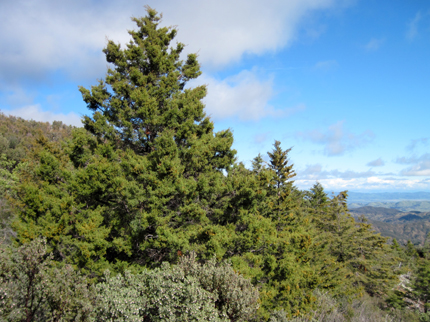
Sargent Cypress are found
growing in serpentine soils in chaparral and montane forests. This grove is growing in association with chamise, manzanita, wart-leafed ceanothus, yucca, and other chaparral plants that can tolerate serpentine soils.
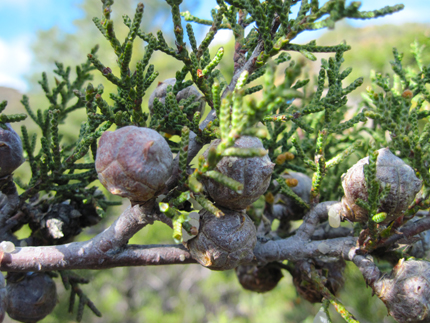
Foilage and female seed cones on the branch. The trees and cones are well adapted to fire. The tightly sealed serotinous cones open to release seeds when fire melts the resinous sap that holds the cone closed. The foilage has small tight scales and little fragrance when crushed.
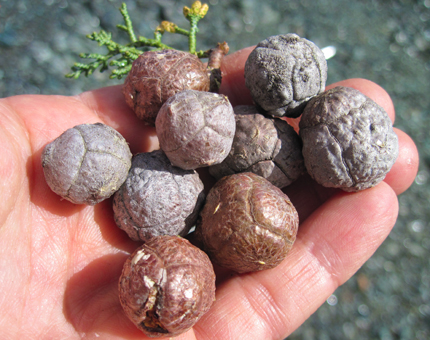
Seed cones are about 1 inch in diameter and usually tightly sealed. Their color ranges from a rich rust-brown to light gray.
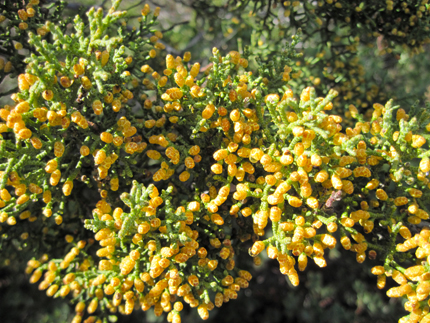
Male pollen cones will produce thick clouds of pollen during the winter months.
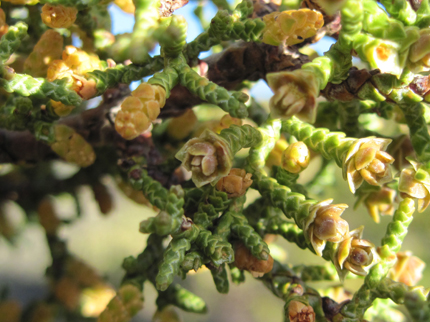
At the tips of larger branches are young female cones (see center and right) mixed with yellow male pollen cones.
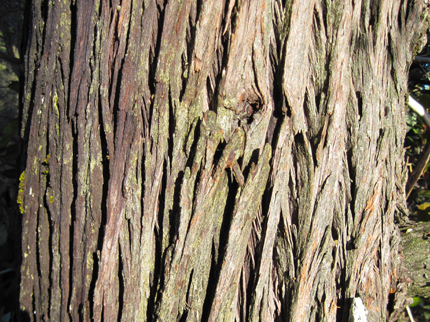
The bark of mature trees is brown to gray, fiborous and often spotted with lichen.
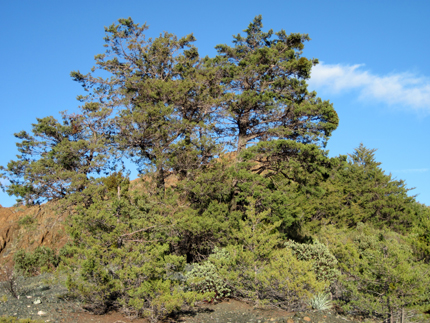
Notice the variety in shape and size in this grove of Sargent Cypress.
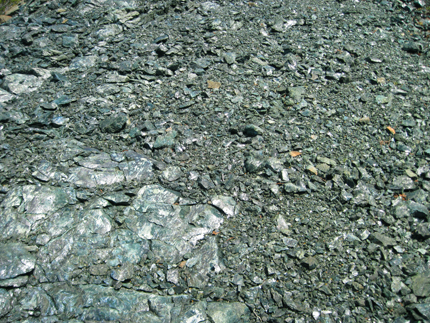
Serpentine soils often have a greenish tint. They are of interest because very few plants have adapted to grow in the unusual mix of minerals in these soils. The few plants that have adapted to grow primarily in these soils are referred to as serpentine endemics.
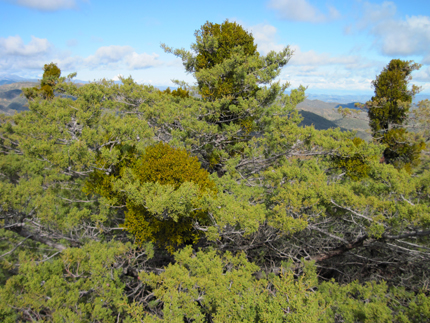
This grove of Sargent Cypress has clumps of Dense Mistletoe (Phoradendron densum) growing in various locations on the plant.
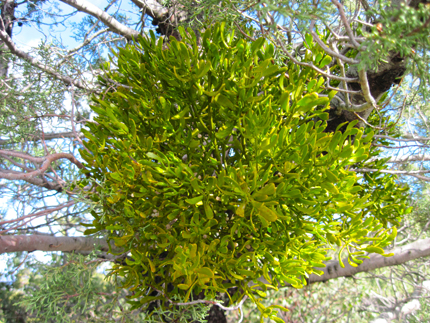
Dense Mistletoe is a parasitic plant that grows primarily on cypress and junipers. Mistletoe is an important food source for many birds.